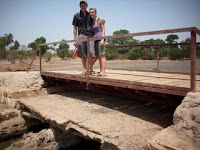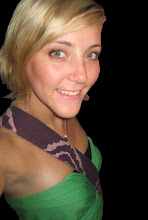Tuesday, 26th May to Friday 29th May at PIWAMP...
Alpha picked us Adam, Jordan and myself Tuesday morning to take us to Yundum where the Department of State for Agriculture (DOSA), Participatory Integrated Watershed Management Program (PIWAMP) office is.
We met Keba, who is our boss for our work with PIWAMP, and turns out to be Alpha's uncle of sorts (everyone is a form of family in Africa!). Keba overseas the projects that PIWAMP does all over the country. Landing Sonko is the director for the Department of Technical Services (division of DOSA which PIWAMP falls under). PIWAMP's main mission is "to help farmers increase productivity", and this includes a large variety of projects.
Over these two weeks, Keba began to introduce us to the types of projects that PIWAMP does. Salt water intrusion has become a huge concern for Gambian agriculture. The Gambian economy and way of life is largely agriculture based. People who sell tourists crafts in the on-season will travel back to their villages for the off-season (hot and rainy season) to help harvest crops etc.
The first 100km of the Gambia River is perenially salty. The next 100-150km is seasonally salty (it remains salty until the huge and torrential rains come from June-August), and the river after that 200-250km is perenially fresh.
Keba took us to visit many sites on the North and South Banks of The Gambia in these two 'orientation' weeks at work.
On the 26th May, we went to Bondal Jola to look at dyke and spillway construction that is being completed for rice field protection. These dykes and spillways are to correct two problems. Firstly, due to climate change there is no longer enough water for the farmers to grow there rice, rice needs typic
 ally 35cm of water to submerge the roots and stalk, and still rise above the water level. Secondly, the tributary here which flows into the Gambia River is salty and has been flooding the rice fields and killings the crops. The dyke is to prevent this. All of these dykes have to be surveyed to be on the same elevation line. (Surverying..we can do!)
ally 35cm of water to submerge the roots and stalk, and still rise above the water level. Secondly, the tributary here which flows into the Gambia River is salty and has been flooding the rice fields and killings the crops. The dyke is to prevent this. All of these dykes have to be surveyed to be on the same elevation line. (Surverying..we can do!)Many of the bridges in rural areas are also broken now. PIWAMP is replacing and fixing these bridges so that the farmers can have access to their rice fields, and are able to travel across the flood plains to markets, etc.
[Jordan and I on the replaced foot bridge in Bondal Jola - photo Courtesy of Adam]
On the 28th May, we went to Berrending and Gunjur. PIWAMP is constructing more dykes and spillways for rice fields in this area.
Sat, 30th May - Walk to Bakau
Adam, Jordan and I were intending to go to Banjul Market today (via bush taxi, which we have become very adapt at taking to work in Yundum from Fajara everyday). It turns out that the last Saturday of every month, is Clean the Nation Day. This day is meant for residents to clean their homes and businesses and mainly rid them of trash. No cars (except ambulance, army, etc) are allowed on the roads until 1pm.
So dashing our hopes of going to Banjul, we ended up walking to Bakau, and going to the fishing pier there! Being a coastal country, The Gambia has a large fishing industry. Unlike my first introduction to the overwhelming smell of fish (at the market) the pier has a strong smell which you get used to after a little while and doesn't bother you as much any more. A local took around the pier showing us all the different types of fish (barracuda's, shark fish, butter fish, and I forget the others). This included one fish with the widest, grossest teeth!! (Jordan has a pic!)
We managed to take a Bush Taxi back to Fajara for 5 Dalasi each, and not the 200 Dalasi the tourist taxis were trying to ask us for! And we finally made it to Banjul market Sunday morning all via bush taxi!
Mon, 2nd June - Fri, 6th June - More trippin'...
Beware the Mangoes!!! Monday I was ill from food poisoning from a Mangoe. There are in season here, and I have never seen soo many mangoe trees! No idea how they survive in this dusty and dry climate, but none-the-less, they are delicious! Just don't eat the bad ones...
Tuesday we went to Bulok. In Bulok PIWAMP is construction channels and dykes to divert water from flowing through villages. The erosion damage from the rains is unreal! Sometimes a foot or more of building foundations has been uncovered. To correct this water is diverted in stages down slopes to runoff channels which connect to the tributaries of the Gambia river. (It was a cool 41C during the day without considering the humidex..which is significant!)
Tuesday was also the day we moved from Leybato to Sunbird Lodge. The lodge used to be called Corcodile John's, and was run by Croc John, but is now Sunbird and run my June, her son Alan, and his son Louis! Sunbird Lodge is self catering (meaning Kitchen :) ) and includes wireless internet (huge bonus). The beach is still only a 5 minutes walk away!
On Thursday and Friday we took an over night trip to the North Bank. We took the ferry at Banjul (which was quite an experience on its own, cattle and all) to the North Bank highway and drove to Kani Kunda.
 Just on the river from Kani Kuna an old bridge has broken down, preventing people from getting to Dankunku Island which is a natural setting for rice production. PIWAMP is constructing a new loading dock and bridge to the island.
Just on the river from Kani Kuna an old bridge has broken down, preventing people from getting to Dankunku Island which is a natural setting for rice production. PIWAMP is constructing a new loading dock and bridge to the island.

The landscape is gorgeous! And there are so many interesting trees...! The area is so dusty and humid, that I have not seen a sunrise or sunset yet, as the sun gets lost behind the haze as it rises and sets.
We took the ferry at Ferafenni to the south bank and stayed the night at an agriculture training center.
 [Culvert construction on South Bank Road]
[Culvert construction on South Bank Road]One thing Jordan mentioned, and I have begun to notice is that although there are many (expensive) new shiny cars on the road, or new tractors in the fields, or sparkling buildings around, there is not much emphasis put on up keep and maintenance. I believe that this can be attributed to a lack of ability for maintenance, due to the lack of access to the right parts/equipment and lack of knowledge, and also to lack of ability to remove the broken equipment etc. At the Yundum office (and many others) there are decaying tractors just sitting in the yard. At the Farafenni ferry, the old ferry is stuck in the mud, has sunken and is decaying and now blocking one of the causeways.
Next week we start a two week train course with the Western African Community Development Training Center (WACD-TC) with Alpha Jallow again. We have yet to do some 'real engineering' work yet, so I am hoping that once this course is done, and before I move on to Lilongwe I get to help with some of the PIWAMP projects!







0 comments:
Post a Comment